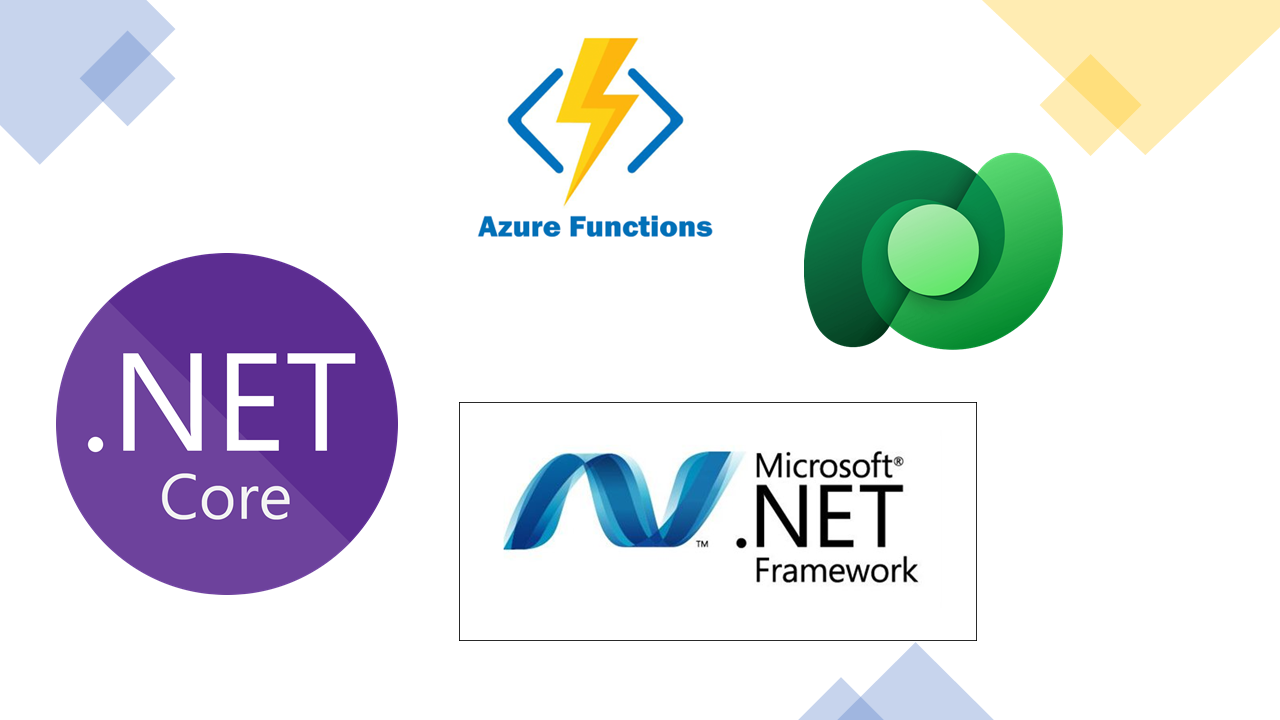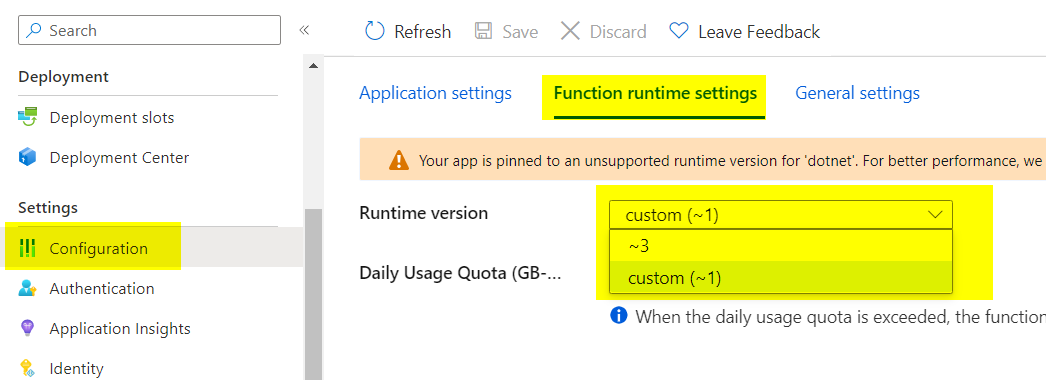
Dataverse : Azure Functions .Net Framework vs .Net Core / Runtime 1 vs 4 - Migration Steps:
Do you have a FunctionApp in Runtime 1 targeting a .Net Framework project and want to migrate it to a newer Runtime like 4?
This is possible! But not so simple if you don't read this article! ;)
Azure Function Runtim 4 and .Net Framework?
First of all, we must clarify a gray area introduced by Microsoft. In the official Azure Function Runtime documentation, there is a table suggesting that Runtime 4 is natively compatible with the .Net Framework. It's partially true...

In fact it seems possible but through the option to run the App in isolated process.
Here is the doc.
I have been able to try to follow the steps to do so, without success at the time of writing this article. Indeed, my version of Visual Studio doesn't seem to handle this correctly...
Here's a GitHub thread speaking about it.
So how to do?
The King is Dead, Long Live the King!
For years we have all used the Dynamics NuGet package allowing us to connect to the service and use the API. Microsoft.CrmSdk.XrmTooling.CoreAssembly
Except that this great package is only available from version 4.6.2 of the .Net Framework!
Until recently, there was no solution to use these DLLs with .Net Core...Then the Microsoft.PowerPlatform.Dataverse.Client project appeared. It's been in preview for a while, but it's now been in GA since June 2022!
This package will not only allow you to retrieve your development habits but will also offer you new methods and others to come.
Here is a sample code allowing you to connect to Dataverse and do a WhoAmI. You will notice that the code is not changing a lot between the old version CrmServiceClient and the new ServiceClient!
var service = new ServiceClient($@"AuthType=ClientSecret;url=URL;ClientId=ID;ClientSecret=SECRET");
var userId = (WhoAmIResponse)service .Execute(new WhoAmIRequest());
log.LogTrace("UserId : " + userId.UserId);
WARNING : Check this article to know about the non support of IFD + ADFS
Ready for Azure Runtime 4!
Thanks to this, you can now fully consider migrating your FunctionApps from runtime 1 to 4 and thus be up to date in your PaaS.
You will obviously have to consider skipping the following points:
- Change the Runtime on Azure Function.
- Modify your VS project to point to the correct framework and runtime version.
- Modify your NuGet packages to remove the old and reference the new.
- Modify the code to resolve the errors.
- And more...
Step by Step
1. Change the Runtime on Azure Function.
- Log in to your Azure Portal and navigate to your Function App.
- Go to the Configuration section and then to the Function Runtime Settings tab.
- Here you will have a drop-down list to choose the Runtime version.

- If ever you cannot select version 4. Here is a procedure allowing you to carry out the modification by CLI script.
az login
az functionapp config set --net-framework-version v6.0 -g <ResourceGroup> -n <FunctionAppName>
az functionapp config appsettings set --settings FUNCTIONS_EXTENSION_VERSION=~4 -g <ResourceGroup> -n <FunctionAppName>
2. Modify your VS project to point to the correct framework and runtime version
- Open your Visual Studio project and open the .csproj file.
- Modify these two nodes as follows.

3. Other steps
I think you know how to modify the NuGet packages and migrate your code. No trap here. :)
Enjoy !

